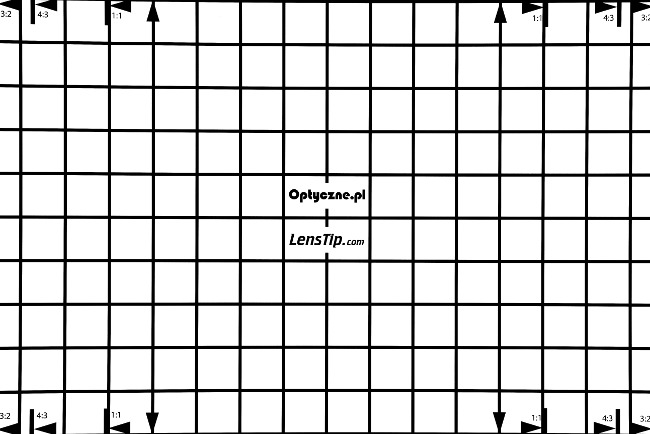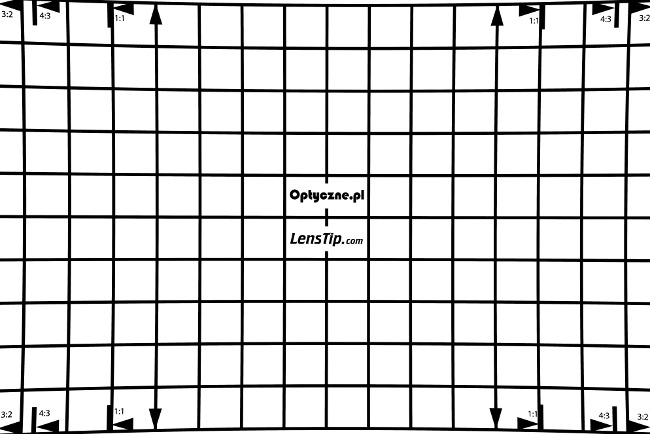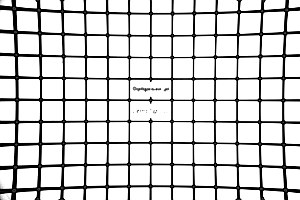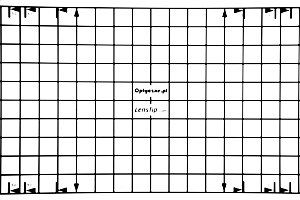Sigma A 50 mm f/1.4 DG DN
6. Distortion and field of view
Field of view
A rectilinear 50 mm lens should provide an angle of view of 46.8 degrees on full frame- exactly the value the producers declare in official specifications. We decided to check that claim. In order to do so we took photos of starry sky, saving them at the same time as JPEG and RAW files. Then we transformed the pixel layout (X,Y) from the photo into the equatorial coordinate system (right ascension and declination), which locates a star on a celestial sphere. That way we could determine the field of view of the lens with utter precision and in the right way, so for rays of light coming from infinity. The transformation was based on over 70 stars positioned evenly across the frame and average mesh-fitting error amounted to just 6 seconds of arc for JPEG files and 9 seconds of arc for RAW files.In case of JPEG files we got a result of 46.64 degrees, for RAW files it's 46.79 degrees. Our measuring error we estimate at about 0.05 deg so the second result is in perfect accordance with the official declarations of the producer.
Distortion
The older double gauss 1.4/50 constructions often experience problems in this area, some of them having distortion levels of even -2%, but these were simple devices, with just 6-7 elements. It shows the correction of this aberration was hardyl easy in their case. When in 2014 Sigma showed their new series Art 1.4/50 model with as many as 13 elements they proved that distortion can be corrected very efficiently in such system. Its level amounted to just -0.12% so, within the margin of error, was zero.The new Sigma A 1.4/50, designed for mirrorless cameras, has 14 elements, one element more than the reflex camera version, it seems also in this case nothing prevented the specialists from correcting distortion in a perfect way.
| Sony A7R III, 50 mm, APS-C | |||
 |
|||
| Sony A7R III, 50 mm, FF | |||
 |
|||
Please Support UsIf you enjoy our reviews and articles, and you want us to continue our work please, support our website by donating through PayPal. The funds are going to be used for paying our editorial team, renting servers, and equipping our testing studio; only that way we will be able to continue providing you interesting content for free. |
- - - - - - - - - - - - - - - - - - - - - - - - - - - - - - - - - - - - - - - - - - - - - - - -
Still, it's worth mentioning the fact that old gauss lenses didn't change their optical construction depending on the distance from the photographed object, because they focused by moving the whole optical system at once. In their case distortion didn't depend on the distance from the aim. The situation of the new Sigma is different so we decided to check how change its level of distortion when you change the position of the focus ring and the position of optical system as well.
Mind you, we didn't change the distance from the testing chart but only the position of the ring. In order to make the chart more or less sharp we stopped down the aperture to f/16, ensuring the widest depth of field possible. The depth was anyway too narrow to encompass the proper aim but we managed to take photos sharp enough to take our measurements.
| FF, 50 mm, 0.45 m | FF 50 mm, infinity |

|

|
Two things stick out here. First, the field of view of the lens changes very noticeably – you deal here with significant focus breathing but we are going to describe it in more detail in another chapter. Secondly, the change of the field of view along with the distance changes distortion levels very significantly. With resolution set at infinity you deal with slight 'pincushion' of +1.13%. Unfortunately, when you pass to the minimum focusing distance that 'pincushion' increases to monstrous levels for a standard lens, reaching +5.81%.
To sum up, in case of distortion correction the Sigma definitely didn't do a very good job. It's strange, especially that the optically simpler reflex camera version didn't have any problems in this category. The new Sony FE 50 mm f/1.4 GM also fared here better even if it is smaller and physically lighter so its task is more difficult. The Sony features 14 elements positioned in 11 groups so the number of elements didn't help it either.






